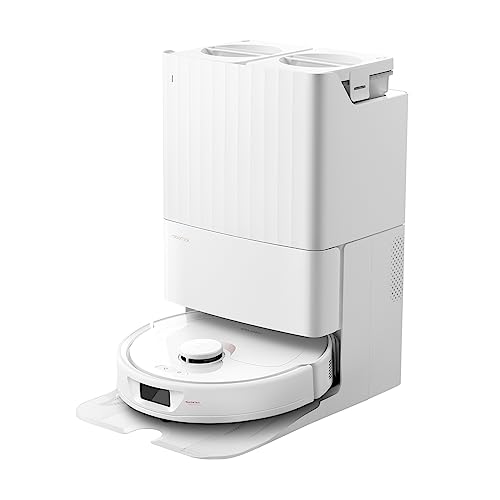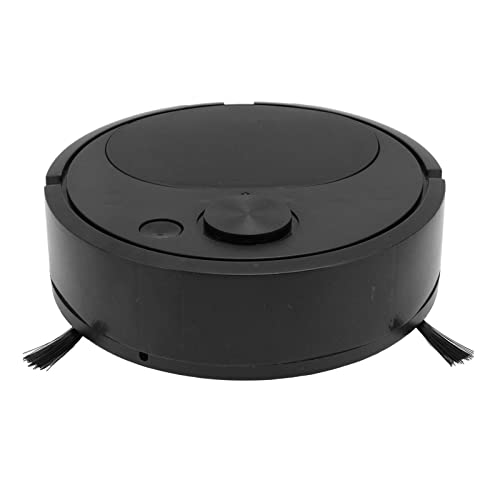Robot Vacuum's Tips That Can Change Your Life
페이지 정보
작성자 Latesha 작성일24-03-28 01:57 조회3회 댓글0건본문
 Robot Vacuum Cleaner - How It Can Help You Keep Your Floors Clean
Robot Vacuum Cleaner - How It Can Help You Keep Your Floors CleanRobot vacuums let you sweep, mop and vacuum without having to bend over or strain. They can even be programmed to clean according to schedules using on-device controls.
Sensors assist in navigating obstacles. Advanced models map rooms with cameras or lasers.
1. Easy Cleaning
A robot vacuum is a "set it and forget it" device that will keep your floors spotless and reduce the amount of dust, hair and pet dander that you have to clean up on a day-to-day basis. Advanced features let you schedule automatic cleanings, create zones you want it to stay away from and track its progress using the app for smartphones.
Most robot vacuums utilize sensors in combination to help you navigate your home and detect obstacles. Downward-facing sensors that can sense chair legs, coffee tables and sofas are commonplace, while more advanced models might have forward-facing cameras or lasers that enable them to map rooms and identify furniture. These sensors are used to guide robots to clean specific areas and avoid obstacles.
Despite their smarts they are not the most efficient robot vacuum's are able to navigate your home with ease and they're often tripped up by thresholds for doors or thick rugs as well as stray shoelaces and cords. They can also be caught under or on low furniture and need human intervention to free themselves. It is normal for them to get tangled up, as humans aren't able navigate spaces in a perfect way.
Most robot vacuum's have an area that is used to store the dirt and debris it collects during its automated cleaning. The compartment can be manually emptied or emptied automatically by the machine's docking station, based on the the model. Some robots can also mop using microfibre cloths that are moistened by a small tank of water at the base. Some robots have an remote that lets you to control the robot and program it to run on time.
2. Time to save
Robot vacuums let you automate cleaning and let you forget about them. This can free up your time to spend on tasks that require human hands, or just relax. You can even program the machine to clean while you're at work or on vacation.
Look for models that have smart mapping capabilities. These models use cameras, gyroscopes, or radar-guided systems to create maps of your home and follow their movements. These maps help the robot avoid repeating the same areas over and over, which makes the job go quickly.
Many robot vacuums are equipped with dirt sensors to keep them from hitting furniture or lingering over dirty spots. These features guarantee an efficient and thorough cleaning. Some models allow you to create virtual boundaries that prevent the robot from accessing certain areas, such as the bedroom of a child, through the application. Some models have a physical barrier that you can close and others have magnetic boundary tape which you can put on furniture to mark zones that aren't allowed.
Whatever the level of sophistication your robot is, it's important to conduct regular maintenance to keep it in top shape. This includes removing any hairs tangled in the brushes as well as emptying the dustbin and washing it out after every cleaning session, and wiping off the sensors and cameras.
Robotic vacs cost more to maintain and repair than barrel vacs because they have more complex components. They're more likely to suffer from defective sensors, battery problems, and other issues that are difficult or impossible to fix, which can increase the cost of ownership over the long run. But, by ensuring that you're in line with the recommended maintenance schedule, you can prolong the life of your robot and increase its performance.
3. Safer Cleaning
The top robot vacuums come with built-in sensors that help them avoid walls, furniture and other obstacles. Many robot vacuums come with self-emptying bins and they can be controlled with an app on your smartphone to set cleaning times and create virtual maps that indicate the bot's location. Some even have mopping functions and can be manually controlled to get into difficult-to-reach places such as under beds.
They're also more effective than regular vacuums in cleaning hard-to-reach areas like under furniture. But, they're not a replacement for a standard mop or vacuum mop combo robot. To do a good job, they're best utilized together with other cleaning tools.
Some of the more advanced models we test in our CHOICE small appliances lab have mopping capabilities that make use of microfibre pads, which are which is soaked in water from a tank that is located on the base of their. They're also better at tackling carpet than their stick-vac counterparts and can be programmed to run two or more passes, to ensure the floors are thoroughly cleaned.
In addition to wall sensors Additionally, some of the most advanced robot vacs on the market map your home with lasers or cameras, ensuring each room is thoroughly cleaned without having to repeat rooms or miss important areas. A robot vacuum is not 100% secure, even with these safety features. Even with the most secure security features that are internet-connected, all devices can be vulnerable to hacking and should be kept on a secure Wi-Fi network.
Additionally, all robotic cleaners should be regularly cleaned to prevent debris build-up and reduce wear and tear. You can employ a brush or a tool provided by the manufacturer to do this. Examine the wheels of the right and left drives, as well the castor Vacuum Mop Combo Robot wheel for dirt or other objects.
4. Simple to Operate
Robot vacuums operate on an established schedule, making it easy to keep your home tidy. Set it to run multiple times every week and your floors will be free of dust, pet hairs, dirt, and lint.
The majority of the newer robot vacuums work with an app, making them easy to control from anywhere. The majority of models let you set a cleaning routine and view a virtual representation of the progress made by your robot. Most robots also let you create no-go zones ('virtual walls') that prevent your vac from entering specific areas of your house. By using the app, you can also manually steer your robot vac or select different modes, like Auto which moves it from room to room, Spot, which focuses on a specific area and Edge that lets it hug your home's walls to clean the perimeter.
The most recent models come with mapping capabilities that function with gyroscopes, cameras or a radar-guided system. Mapping allows your robovac to trace the most efficient route to your home, which can increase its efficiency and decrease the number of times it must return to clean spaces previously cleaned. The most recent robots can save multiple floor plans to maximize efficiency. If the battery runs out they can return to their dock and recharge or continue cleaning from where they left off.
Most robots are less maintenance-intensive than conventional vacuums. However, you should be sure to empty the dust bin and clean it often. Also, you should clean the brushes on the sides and the brush, as well as the filters. By taking good care of your robotic vacuum cleaner, you will extend its life expectancy and ensure it is operating optimally.
5. Easy to Maintain
The best robot vacuums aren't just intelligent, they're also low maintenance. The minimum maintenance is to empty the dustbin occasionally and wipe the sensors and charging area with an easy clean cloth. The majority of robots can be left to their own devices, apart from these occasional tasks. They will do their job without your help and won't be distracted by things like shoelaces, socks, or pet toys.
Robotic vacuums make use of devices for navigation, such as sensors, cameras and lasers to collect pet hair, dirt, and other debris from hard floors such as tiles, wood, laminate, as well as low-pile area carpets and rugs. Smarter robot vacuums utilize camera, gyro and radar-guided navigation systems to create and save maps of your home. This allows them to effectively navigate and avoid repeating the same areas over and again.
Most robots are compatible with your smart assistants, like Alexa or Google Assistant, so that you can ask them to clean your home using an app on your mobile. If you have several areas in your home that you do not want your robot visit You can use the app to define virtual boundaries, or 'virtual walls' that block areas your bot shouldn't enter.
 Keep in mind that a robot vacuum can take longer to clean your home than an upright. Also, the higher-end models are generally more expensive than stick vacuums and usually come with shorter warranties. However, if you've got the time to let it do its work on a regular basis it can take the strain of carrying around your old vacuum and keep your floors looking fantastic all the time.
Keep in mind that a robot vacuum can take longer to clean your home than an upright. Also, the higher-end models are generally more expensive than stick vacuums and usually come with shorter warranties. However, if you've got the time to let it do its work on a regular basis it can take the strain of carrying around your old vacuum and keep your floors looking fantastic all the time.댓글목록
등록된 댓글이 없습니다.



